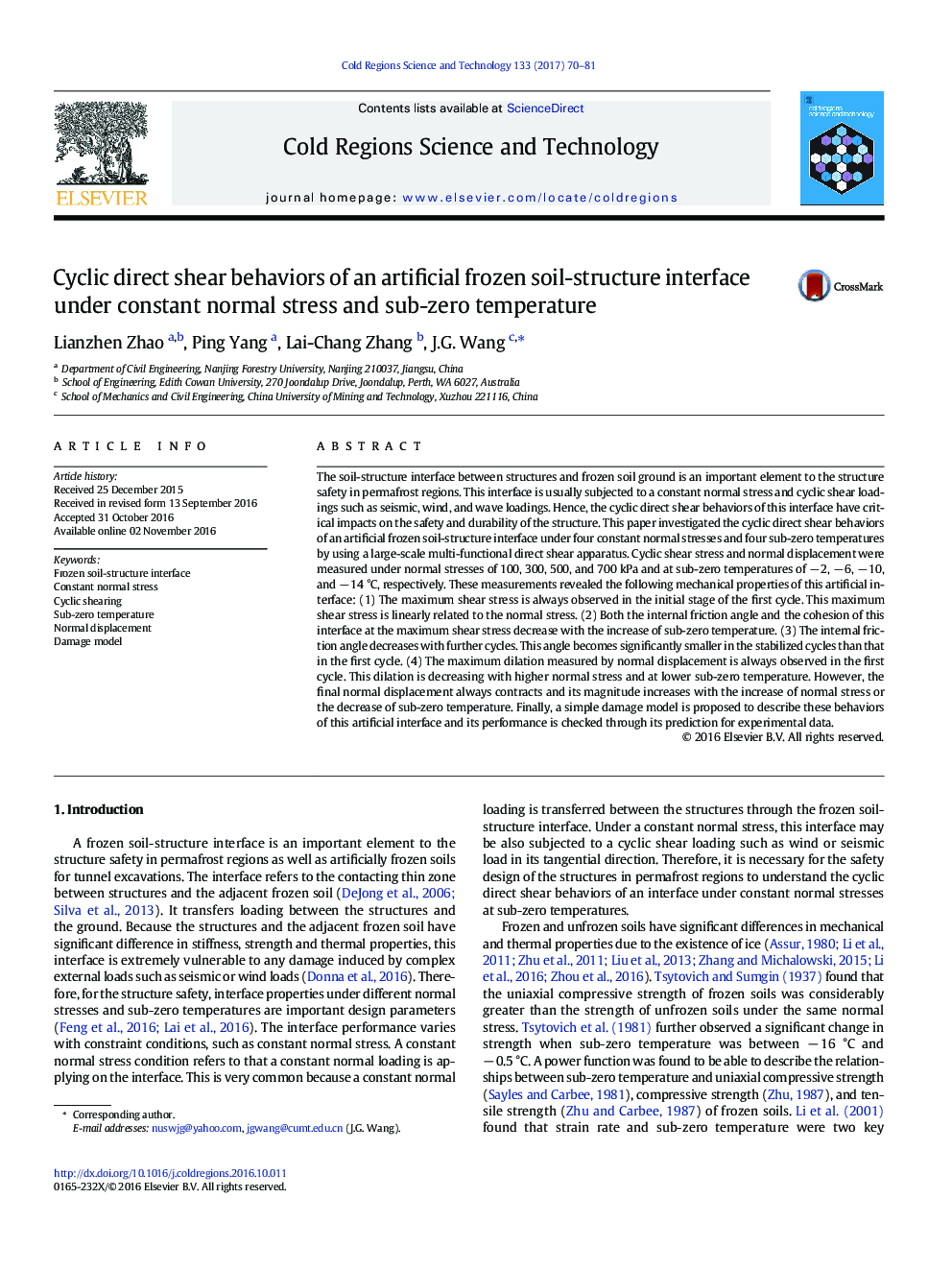| Article ID | Journal | Published Year | Pages | File Type |
|---|---|---|---|---|
| 4675574 | Cold Regions Science and Technology | 2017 | 12 Pages |
•Cyclic direct shear tests for an artificial frozen soil-structure interface•Impact of sub-zero temperatures on mechanical properties•Impact of normal stress on mechanical properties•A damage model for the cyclic mechanical properties
The soil-structure interface between structures and frozen soil ground is an important element to the structure safety in permafrost regions. This interface is usually subjected to a constant normal stress and cyclic shear loadings such as seismic, wind, and wave loadings. Hence, the cyclic direct shear behaviors of this interface have critical impacts on the safety and durability of the structure. This paper investigated the cyclic direct shear behaviors of an artificial frozen soil-structure interface under four constant normal stresses and four sub-zero temperatures by using a large-scale multi-functional direct shear apparatus. Cyclic shear stress and normal displacement were measured under normal stresses of 100, 300, 500, and 700 kPa and at sub-zero temperatures of − 2, − 6, − 10, and − 14 °C, respectively. These measurements revealed the following mechanical properties of this artificial interface: (1) The maximum shear stress is always observed in the initial stage of the first cycle. This maximum shear stress is linearly related to the normal stress. (2) Both the internal friction angle and the cohesion of this interface at the maximum shear stress decrease with the increase of sub-zero temperature. (3) The internal friction angle decreases with further cycles. This angle becomes significantly smaller in the stabilized cycles than that in the first cycle. (4) The maximum dilation measured by normal displacement is always observed in the first cycle. This dilation is decreasing with higher normal stress and at lower sub-zero temperature. However, the final normal displacement always contracts and its magnitude increases with the increase of normal stress or the decrease of sub-zero temperature. Finally, a simple damage model is proposed to describe these behaviors of this artificial interface and its performance is checked through its prediction for experimental data.
